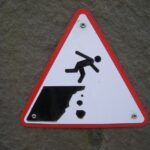
In New Jersey You Get Two Cliffs For the Price of One.
April 24, 2024
Advocates Urge 16 School Districts to Readopt Policy Protecting Transgender Students
April 25, 2024Focus on Newark Youth, Who ‘Struggle To See a Path Forward’
A new report from Newark Opportunity Network, “A Portrait of Newark,” looks at how Newark young people, ages 16-24, are faring. They conclude that the Newark youth “have the lowest level of well-being among the 170 neighborhoods that make up the New York Metropolitan area,” with 18.4% of teens and young adults neither in school nor working, double the national average and higher than pre-pandemic levels. These “disconnected” youth, the report says, “often struggle to see a way forward.”
Does Newark’s public education system, a major determinant of well-being, help at-risk young people close opportunity gaps and improve their prospects?
Not really.
Of course, that’s true in many districts with high numbers of low-income children of color who, the researchers say, are more likely to attend underfunded schools (although Newark public schools are well-funded, at $24,776 per pupil and a 24-25 budget of $1.5 billion). Yet Covid made everything worse, resulting in what Senator Teresa Ruiz called a “state of emergency” with high levels of learning loss and increased rates of chronic absenteeism.
Newark Public Schools, the “Portrait” says, responded by focusing attention on students who were close to passing state tests.
From the report:
“Newark’s public school district addressed drops in test scores by mandating summer school, but not everyone could take part; only schools within 10 points of passing the state’s math test and with an attendance rate of 95 percent or higher were able to participate. The students most likely to fall behind in education because of Covid’s effects have yet to receive what they need to recoup lost learning.”
In 2023, the researchers say, “fewer than one in five third graders passed their English Language Arts tests.” At five Newark district schools “just a single student in an entire third-grade class was reading at grade level. Some public officials blame the Covid-19 epidemic for third graders’ low scores, but others argue that Newark’s third-grade reading levels have been declining since 2019, suggesting the problem runs deeper than missed schools. In 16 Newark district schools pre-pandemic, fewer than one in four students were reading at grade level.”
Regarding chronic absenteeism, researchers say that pre-pandemic rate in Newark was 32 percent and it hasn’t gotten much better.
The report delves into the district’s high schools. About half are magnet schools with selective admissions tied to high academic performance and attendance rates; the other half are traditional high schools. Newark’s magnets have a graduation rate of 95.5 percent but the rate in traditional high schools is only 82 percent. This segues into post-secondary enrollment: Magnet students average a 72.4 percent enrollment in any vocational school or college but for non-magnet students the rate is 36.7%.
It’s not hopeless, concludes Newark Opportunity Youth Network, pointing to one young man, Kevin Able, a student at LEAD Charter School in Newark which is specifically designed for young people who have dropped out of school or are unemployed:
“Instead of being discouraged by the information in the Portrait of Newark report, I feel even more inspired to continue to do advocacy work for positive change in my city. I know there are many other young people who feel the same way and would love the opportunity to ensure everyone in Newark has the resources they need to thrive. My hope is that young people are invited to sit, and actively participate, at all tables where discussions about improving the lives of residents are taking place.”
They conclude that Newark has “incredible resources” and strong community ties, yet “while New Jersey and the country as a whole have experienced a sharp recovery since the height of Covid-19, Newark’s disconnection rate remains above pre-pandemic levels.”




